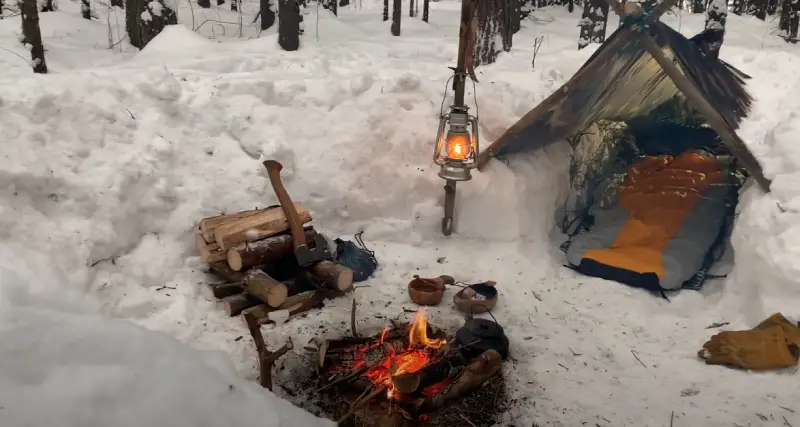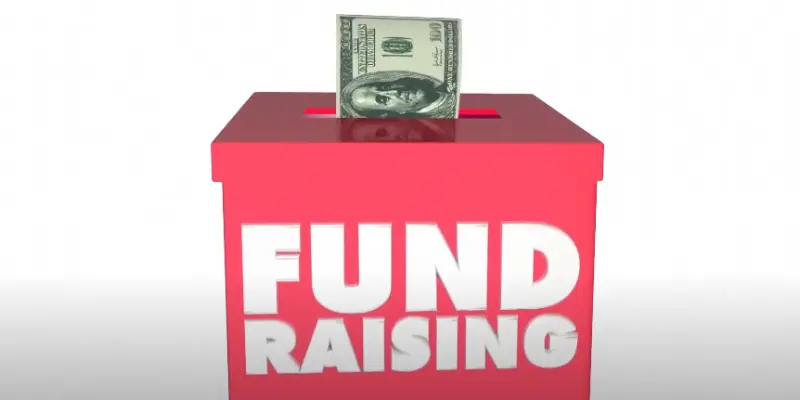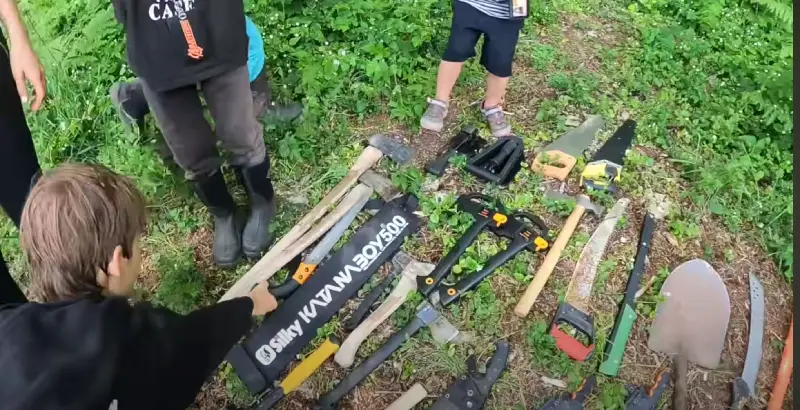How Hot Is a Camp Fire: 5 Factors & 11 Safety Tips
The flames of a typical campfire could reach up to 1,100 degrees Fahrenheit, which could cause severe damage to the surrounding environment. A campfire could scorch nearby trees, shrubs, and other vegetation when it is too hot. In addition, the intense heat from the fire could dry out the surrounding foliage, creating a potential fire hazard. Campfires that are too hot could emit smoke, which could cause respiratory problems and reduce driver visibility.
I was at a campfire which reached temperatures of up to 1650°F (900°C), though the average temperature was around 900°F (482°C). I cooked my food above the fire, in a space without direct flames. The temperature there was around 600°F (316°C). I noticed that as I moved higher, the temperatures dropped.
I will share my experiences about how hot a campfire in my tent camping, how my campfire was built with the right type of wood, and tips for keeping cats safe around campfires.
How Hot Is a Camp Fire: 5 Factors That Had Influence
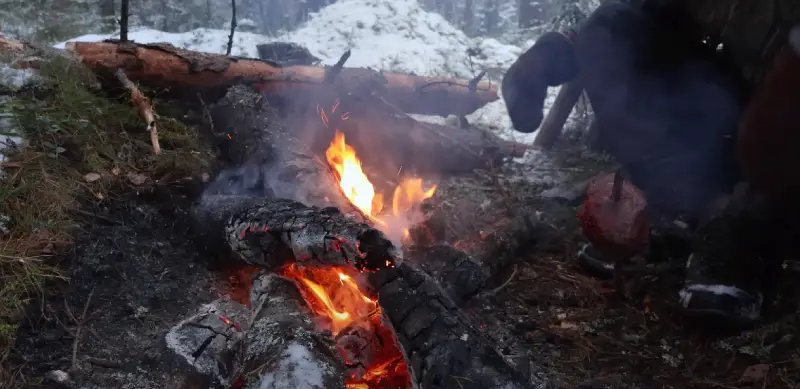
I have spent many nights gathered around a campfire. The flickering flames and cozy warmth bring people together and create unforgettable experiences. Various factors can influence a campfire’s output.
Burning Material
I found that the burning material was one of the most significant factors that affected a campfire’s heat output. Wood was the most common fuel source for a campfire, but not all woods burned the same way. Hardwoods like oak, hickory, and maple burned hotter and longer than softwoods like pine and spruce. The primary reason behind this was the difference in their density and chemical composition.
Oxygen Supply
Oxygen was a critical element that a campfire needed to burn. Without enough oxygen, the fire would smolder and produce less heat. Keeping the fire well-ventilated and not overcrowded with wood or other materials. The amount of oxygen a fire receives could affect its heat output, which could be controlled by adjusting the airflow.
Wind Speed
Wind speed could also influence how hot a campfire gets. A moderate breeze could help supply extra oxygen to the flames, making them more desirable. Strong winds could blow the fire off course and disrupt the airflow, causing the fire to burn unevenly, producing less heat.
Altitude
The altitude at which I built my campfire could also affect its heat output. The air was thinner at higher altitudes, meaning less oxygen was present, which could affect the fire’s combustion process. As a result, campfires built at higher altitudes might not get as hot as those made at lower elevations.
Size of Fire
The size of the fire also affected the campfire temperature. A small fire produced less heat, while a more significant fire produced more heat. Therefore, I needed to plan my fire size based on my needs and the space.
I Had Chosen the Right Type of Wood For My Campfire
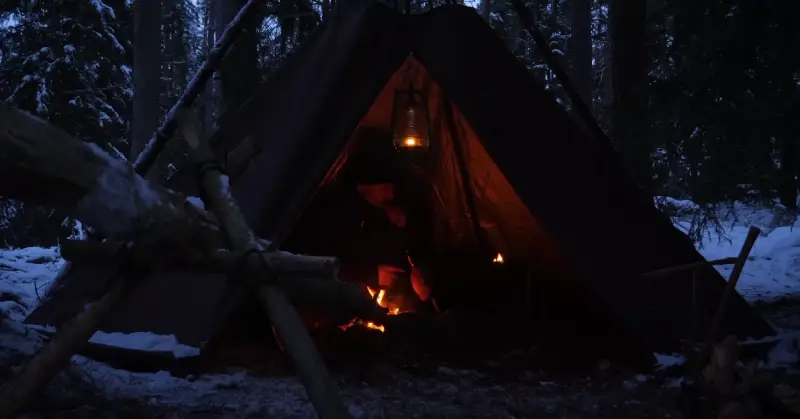
Few woods were created equal regarding my campfires. I found that some types of wood burned hotter and longer than others, making them a better option for my campfire. Here are the best types of wood for my campfires:
- Hickory: I knew this wood to be one of the hottest burning woods available, making it an excellent option to keep my campfire strong. Hickory could reach temperatures of up to 1,200°F (648.89°C), a much higher temperature than other types of wood.
- Ash: If I was planning to cook over my campfire, ash wood was ideal as it burned hot and produced little smoke or sparks, making my meal more enjoyable.
- Oak: Burning for a long time, oak wood was an excellent choice for those who wanted to keep their campfire going all night. It could reach temperatures up to 900-950°F (482.22-510 °C) and had less smoke and more robust flames than other woods.
- Cedar: Campfires could serve not just as a source of heat but also as an aroma therapy. Cedarwood was perfect for this purpose, burning hot and producing a pleasant aroma. The sweet-smelling smoke it generated could help me relax and unwind. Cedarwood gets up to 1,000°F (537.78°C).
- Maple: Although less dense than oak, maple was an excellent choice for campfires because of its ability to burn hot and long, making it a perfect choice for firewood. Maple trees can reach temperatures of up to 1,100°F (593.33°C).
- Birch: Birch was another excellent option for campfires as it burned quickly and easily, thus facilitating cooking meals. Birch burned much quicker than other woods, requiring more wood to keep the fire going.
- Softwood: Softwoods like pine or cedar were excellent for creating a fire when I used them. They burned quickly and produced high flames, ideal for bonfires and roasting marshmallows.
- Hardwood: Hardwoods were denser than softwoods and burned longer, allowing for better temperature control. Oak, maple, and hickory were excellent hardwood options for the campfires I made.
- Kiln-dried wood: It was treated with heat to remove moisture, making it an ideal option for the campfires I built. It burned hotter than untreated wood and didn’t release sparks or pop, making it a safer option than regular firewood.
- Charcoal: Charcoal was an excellent option for campfire cooking, producing higher temperatures and lower smoke levels.
- Pellets: Pellets, made from compressed sawdust, produced a clean-burning flame with low smoke emissions when I used them.
11 Safety Tips For Campfires
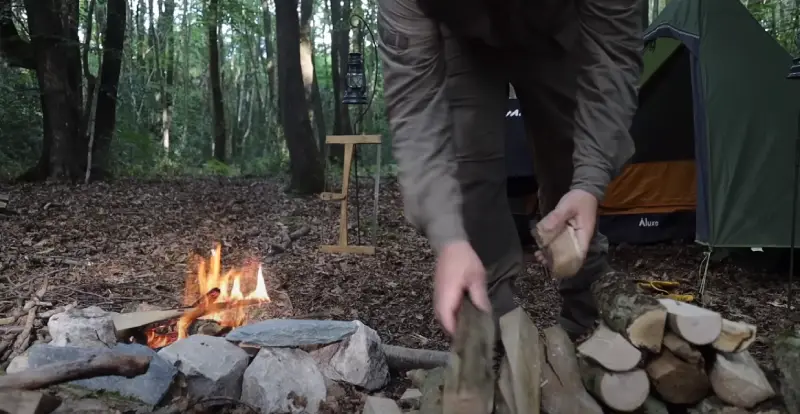
I know firsthand how important it is to be safe around fires. The damage they can cause is not only serious, but they can also destroy natural habitats. That’s why it’s crucial to understand how hot a campfire can get and take measures to ensure our and the environment’s safety.
- Know the Rules: Before I struck a match, I ensured I knew the fire regulations of the campground or wilderness area where I was planning to build a fire.
- Use the Pit: Most campgrounds provide a fire pit or ring to build a campfire. If a pit was delivered, that was the only place I made a campfire.
- Build a safe campfire: I started the fire with dried leaves or grass that would easily catch fire. Then I added kindling, small twigs, and sticks less than an inch in diameter.
- Mind the match: I started my campfire with a game and then made sure it was completely extinguished before disposing of it.
- Use local firewood: It was essential to use local firewood. Local was the closest convenient source of firewood I could find.
- Check for Fire Restrictions: Making a campfire while a fire ban was in place wasn’t just against the law but also very dangerous.
- Clear Debris Nearby: Before I started making a campfire, I gave the area a quick sweep.
- Don’t Leave Fire Unattended: I ensured that at least one adult was to watch the fire.
- Always Keep Spare Water: Whenever making a campfire, I ensure I have enough water to extinguish it afterward.
- Never leave a campfire unattended: An adult always supervised the campfire.
- Only responsible adults should handle and light campfires: I tied back long hair and made sure loose clothing and jewelry were tucked in.
Campfire Safety Tips for Cats
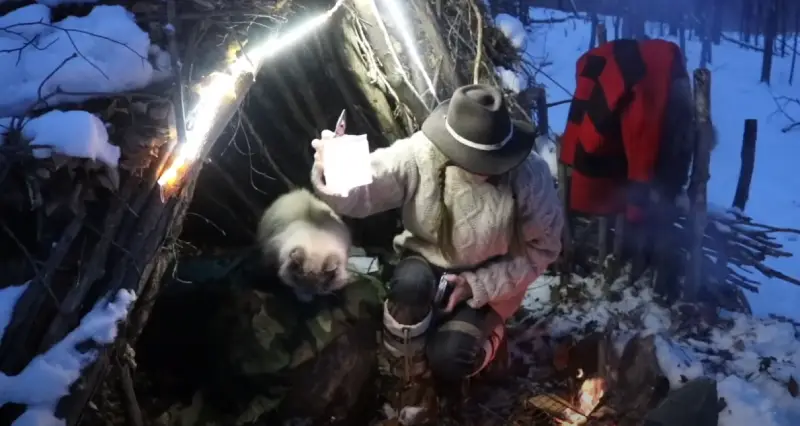
- Microchip and ID: I ensured my cat was micro-chipped and wearing an identification collar. This helped in case my cat got lost.
- Supervision: I never left my cat unattended near the fire. Cats are curious creatures, and my cat might have gotten too close to the fire out of curiosity.
- Secure Area: I created a specific area for my cat that was safe from the fire. This could have been a cat enclosure or a leash and harness setup.
- Emergency Plan: I had an emergency plan in place. I kept my cat’s carrier near the door so first responders could use it to carry my cat to safety.
- Fire-Starting Materials: I kept matches, lighters, and other materials out of my cat’s reach.
- Extinguishing the Fire: I ensured the fire was completely extinguished before I went to sleep or left the area. Hot embers could have posed a risk to my cat even after the fire was out.
Conclusion
A campfire was a perfect way for me to bond with friends and family, especially when enjoyed during an outdoor camping trip. Understanding the factors that affect a campfire’s heat output and choosing the right type of wood is crucial for a successful campfire experience.
It was equally essential for me to prioritize safety and protect the environment while enjoying a campfire. By following these tips, I could enjoy a memorable campfire experience while staying safe and preserving nature’s beauty.
FAQs
What is the best temperature to cook over a campfire?
Campfires should be heated to 350-450 degrees Fahrenheit (180-230 degrees Celsius). Food cooked at this temperature range will not burn or dry out, ensuring safe and even cooking.
